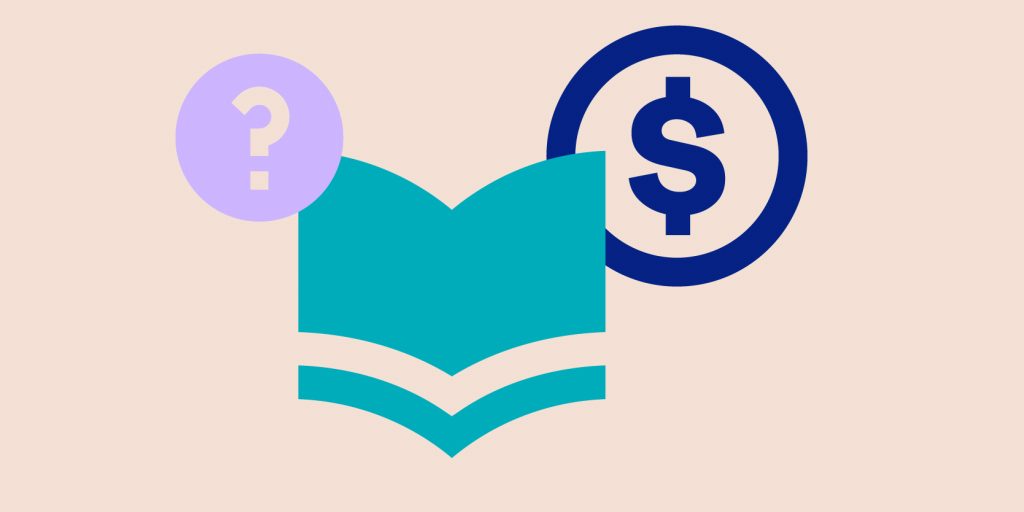If you’re looking into a mortgage for the first time, odds are you have one big question: What does all of this mean? A mortgage is a legal arrangement, and so mortgage terms tend to be a little technical. Here are some easy-to-understand definitions of some of the mortgage terms you may come across:
Common mortgage terms, defined:
Adjustable-rate mortgage: Also called an ARM, this is a mortgage with a low interest rate for a set number of years (usually 3, 5, 7, or 10 years). For the remainder of the life of the mortgage, the interest rate will fluctuate based on the market and other pre-determined factors.
Annual percentage rate: Also called APR, this number is used to help home buyers compare the costs of different mortgages. It includes both the mortgage interest rate and other fees attached to the loan.
Amortization: This is the accounting technique that determines what the monthly payments on a mortgage will be for the lifetime of the loan.
Appraisal: A report that estimates the value of a property based on a comparison of similar properties in the market. Also, the act of appraising a property to generate that report.
Assumable mortgage: A loan and its terms that can be transferred with a sold property to a new buyer.
Balloon payment: A final lump sum payment, typically larger than previous payments, due at the end of a balloon-type loan.
Closing Costs: When you close on a home, a number of fees are due. They typically range from 2% to 5% of the total cost of the home, and can include title insurance, origination fees, underwriting fees, document preparation fees, and more.
Collateral: Property pledged as security for a debt. This could be a house that secures a second mortgage. Collateral can be repossessed if the loan is not repaid.
Construction mortgage: This is a mortgage used to finance new construction homes. Usually, home buyers pay only interest while the home is under construction, and then the full monthly payment schedule begins when the home is complete.
Contingency: This is a condition built into an offer on a house that allows the buyer or seller to get out of the purchase agreement without penalty under certain conditions, such as when a home inspection turns up major issues.
Conventional loan: A mortgage loan not insured or guaranteed by a federal government entity such as the Federal Housing Administration.
Debt-to-income ratio: Mortgage lenders use this number to determine a borrower’s eligibility for a mortgage. It is found by dividing a borrower’s monthly debt payments by their monthly income. You can calculate your debt-to-income ratio here on Trulia.
Deed: A document that legally transfers ownership of property from one person to another. The deed is recorded on public record with the property description.
Deed of trust: Only used in some states, a deed serves the same purpose as a mortgage document. It gives the property to a disinterested third party (a trustee), who holds the title until the owner of the property has repaid the debt.
Down payment: This is the amount of money a home buyer pays a seller in full upon purchase of the home. The amount of the down payment can affect mortgage terms offered to the buyer. A down payment of 20% is considered ideal, but most first-time buyers put down less than 10%.
Earnest money: A deposit made by the home buyer once the buyer and seller are under contract through a purchase agreement. It is held in escrow during the contingency period, and if the buyer breaks the contract, the seller receives the money. At closing, the earnest money deposit is often applied toward the buyer’s down payment.
Escrow: A third-party account that holds funds on behalf of the other two parties in a transaction. When under contract to buy a home, the buyer often deposits money into an escrow account until closing. After closing, it can hold the portion of a borrower’s mortgage payments that will pay their property taxes and homeowners insurance.
Equity: This is the percentage of the financial value of a home that a homeowner has paid off through their mortgage.
Fixed-rate mortgage: A mortgage with payments that remain the same throughout the life of the loan. The interest rate is fixed (unlike an adjustable rate).
FHA Loan: A type of mortgage guaranteed by the Federal Housing Administration that allows borrowers to qualify for a loan with a lower credit score and a lower down payment than a conventional loan requires. It’s is popular with first-time home buyers.
Homeowner’s insurance: Insurance that covers damage to or loss of a home, which is required by most mortgage lenders. In many cases, a borrower will pay a portion of their premium as a part of their monthly mortgage payment.
HELOC: Also called a Home Equity Line of Credit. This is usually a second mortgage that allows the borrower to obtain cash against the equity of a home up to a predetermined amount.
HUD: The U.S. Department of Housing and Urban Development, created to address public housing needs, improve and develop American communities, and enforce fair housing laws.
Interest-only mortgage: A mortgage in which, for a period of time, the monthly mortgage payment consists of interest only. During that period, the loan balance remains unchanged.
Jumbo loan: Also called a non-conforming loan, it is a loan above a certain dollar amount. In 2019, the amount for single-family homes in most states was $484,350. Above that limit, the loan is ineligible to be purchased by the Federal National Mortgage Association (Fannie Mae) or the Federal Home Loan Mortgage Corporation (Freddie Mac), so a jumbo loan is required.
Lien: A legal claim against a property that must be paid off when the property is sold. A lien is created when you borrow money and use your home as collateral for the loan. When the property is sold, the proceeds pay the lien or liens first.
Loan estimate: This is the form, which replaced the Good Faith Estimate back in 2015, that lenders are required to provide within 3 days of a home buyer completing a loan application or within 7 days prior to closing. It shows the buyer an estimate of closing costs and all other fees that will be due at closing.
Loan-to-value ratio: Expressed as a percentage, the amount of the loan divided by the appraised value of a property. For example, if you have a $120,000 mortgage against a $200,000 home, the LTV is 60%.
Mortgage: A legal document used to hold onto the title to a property as security for repayment of a debt.
Mortgage pre-approval: A process by which a potential borrower applies to a mortgage lender for initial approval for a mortgage. If pre-approved, a borrower gets a pre-approval letter, which sellers use to verify a lender’s willingness to give the buyer a loan.
Mortgage pre-qualification: A process by which a potential borrower submits limited financial information to a mortgage lender and receives a rough estimate of how much they may qualify for.
Origination fee: Mortgage lenders charge borrowers this fee to cover the cost of processing the mortgage.
Owner-occupied: A home occupied by a borrower or a member of the immediate family as a primary residence as opposed to a rental property. The distinction significantly affects mortgage rates and eligibility.
PITI: Principal, Interest, Taxes, and Insurance — four elements that typically make up a monthly mortgage payment.
Points: Mortgage industry synonym for one percent, typically of the principal loan amount. To pay an origination fee of two points on a $100,000 loan, for example, you pay $2,000 to the lender. There are also discount points that can be paid at closing to decrease your mortgage interest rate.
Principal: The portion of a mortgage loan that represents the value of the home. It’s also the portion of the monthly mortgage payment that decreases the amount due on the mortgage (as opposed to interest). You can see a breakdown of what could be in your mortgage payment with Trulia’s mortgage calculator.
Private mortgage insurance: Also called PMI, this is a fee that insures the mortgage for lenders when a borrower puts down less than 20%. It is often included in the buyer’s monthly mortgage payment, typically costs 0.5% to 1% of the loan amount each month, and lasts until the owner has 20% equity in the home.
Quitclaim deed: An instrument transferring ownership of a property, typically with no guarantee of an unencumbered clear title.
Rate lock: This is when a mortgage lender agrees to guarantee a potential borrower a particular interest rate for a period of time.
Realtor: A real estate broker or agent with an active membership in the National Association of Realtors. Not all brokers or agents are Realtors.
Reverse mortgage: An instrument used by senior homeowners age 62 and older to convert the equity in their home into a monthly stream of income.
Settlement costs: Another mortgage term for closing costs.
Survey: A measurement-based description of land prepared by a registered land surveyor. exactly where the boundary lines of the property are, plus the location and dimensions of any improvements.
Title: The evidence to the right to, or ownership of, property.
Title insurance: A policy that guarantees the accuracy of a title search and protects against errors. Most lenders require the buyer to purchase title insurance to protect the lender against loss in the event of a title defect. This charge is included in the closing costs and will be itemized on the closing documents.
Underwriting: The process of analyzing a loan application to determine the amount of risk involved in making the loan; it includes a review of the potential borrower’s credit history, a judgment of the property value, and a determination of the borrower’s ability to repay the loan.
USDA loan: A loan guaranteed by the U.S. Department of Agriculture as a benefit to home buyers who purchase homes in certain rural areas and meet income qualifications.
VA loan: A loan guaranteed by the U.S. Department of Veterans Affairs as a benefit to military veterans.
Warranty deed: A legal document that guarantees that the seller is the true owner of the property and has the right to sell the property.
Yield curve: A graph that compares long-term lending rates to short-term rates. Lenders borrow short at lower rates to lend long at higher rates. A steep curve spells bigger profits for lenders.
Zero-down mortgage: A loan that finances 100% of the purchase price.
Any questions? With all of those mortgage terms defined, you might just be ready to sign your papers and move on to homeownership. Here’s what you need to know about closing on a house.



